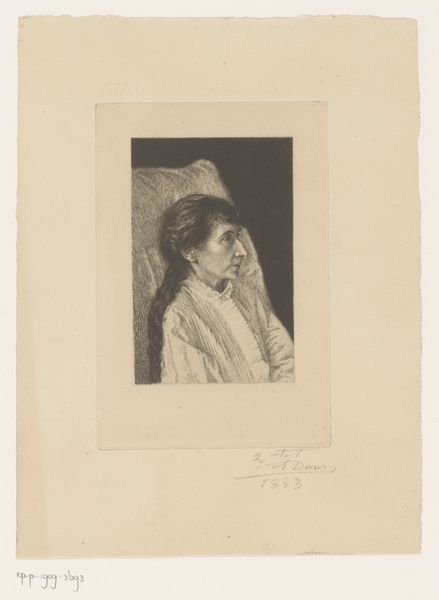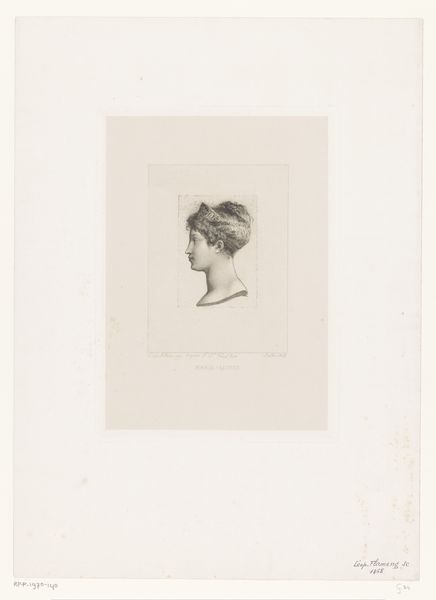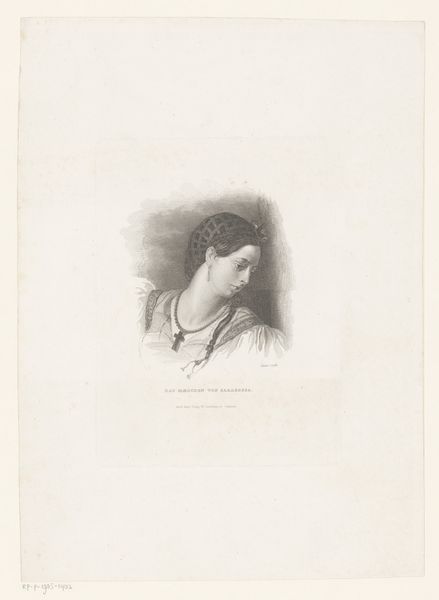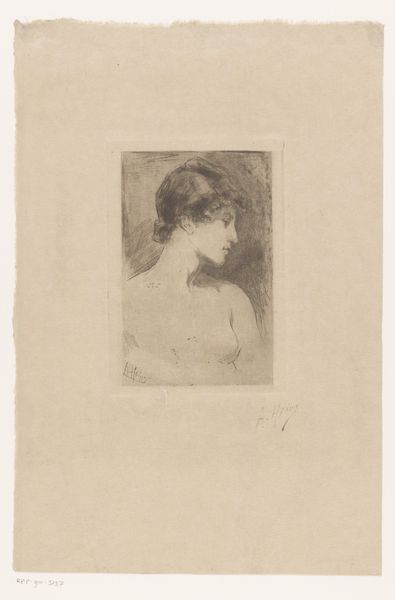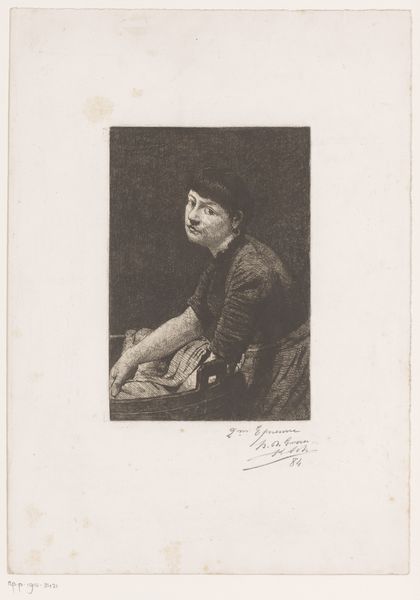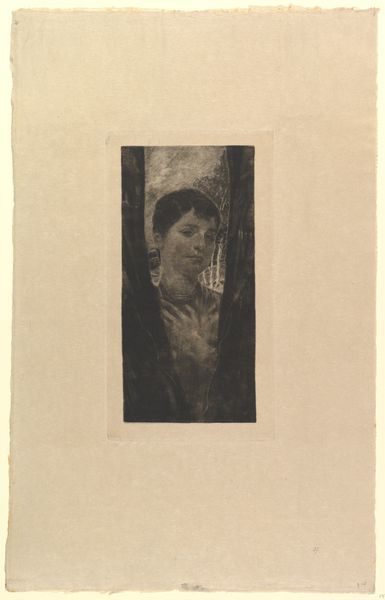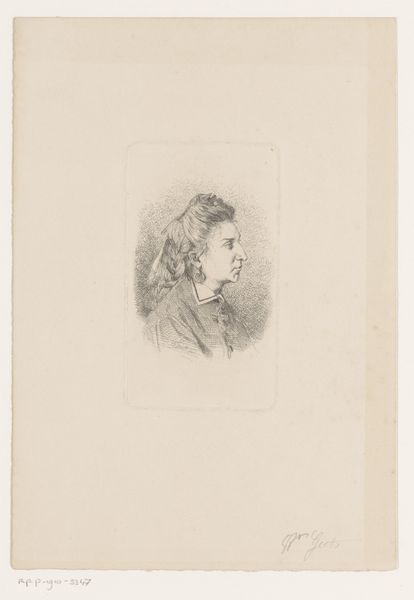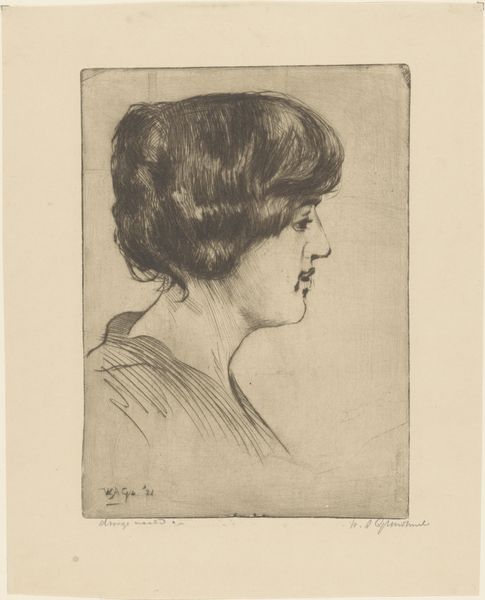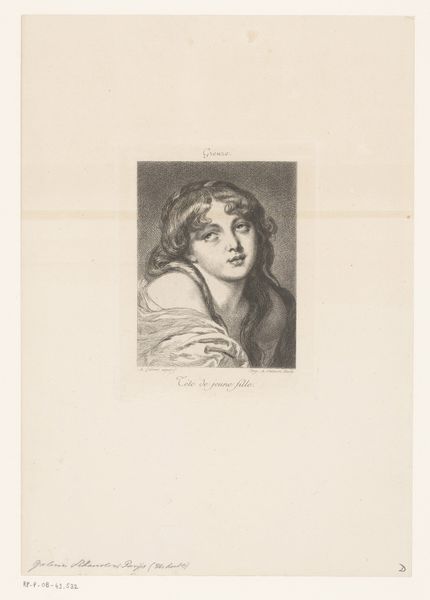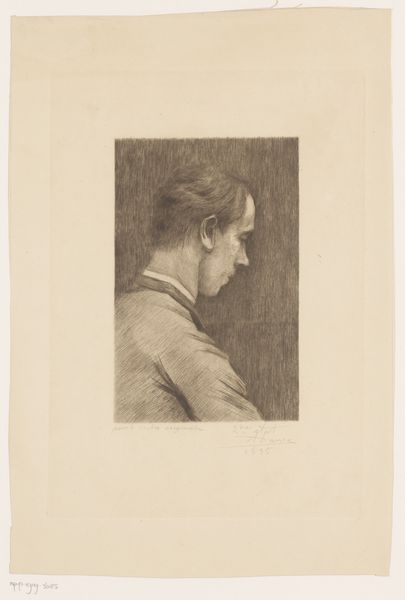
print, etching
#
portrait
# print
#
etching
#
history-painting
#
realism
Dimensions: height 194 mm, width 132 mm
Copyright: Rijks Museum: Open Domain
Curator: This etching, "Portret van Jean-Paul Marat," likely made between 1841 and 1910 by Léopold Flameng, captures the essence of the revolutionary figure. What strikes you first? Editor: Haunting! He’s looking up, kind of off to the side. It feels like he's contemplating some injustice, maybe plotting revenge. He’s got a serious intensity, even in this soft print. Curator: Absolutely. Marat was a physician, political theorist, and journalist, a very significant voice during the French Revolution. Consider the power dynamics in play; Flameng created this portrait well after Marat's death. He gives us his representation of Marat's character. What narrative is conveyed? Editor: Well, that upward gaze… it gives him an almost prophetic air, right? The loose clothing, almost like a shroud, emphasizes a vulnerability alongside the intensity. The guy knew how to pose, even on paper. Or rather, Flameng knew how to depict him! Curator: Note the deliberate choice of etching. It was often favored for reproducing paintings. And it emphasizes line and shadow which both play vital roles here, contributing to that charged emotional tenor. This artwork reflects a powerful engagement with the historical figure. How do you perceive its impact on a contemporary audience? Editor: For me, it serves as a great reminder about people who dedicate their life to certain ideologies... especially people who may not always agree with each other. Like, it makes me want to sit down and have tea with people I usually dismiss immediately, just to learn something new about what informs their vision. Curator: That is well said. It certainly encourages us to engage with the complexities inherent in the political convictions of past and present, acknowledging the multifaceted aspects of human nature in pursuit of change. Editor: Right? Art is really neat that way, especially art with people in it. Curator: Indeed, it sparks introspection and broadens our understanding of individuals driving pivotal historical moments.
Comments
No comments
Be the first to comment and join the conversation on the ultimate creative platform.
